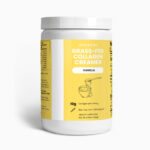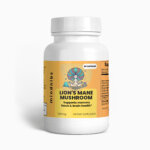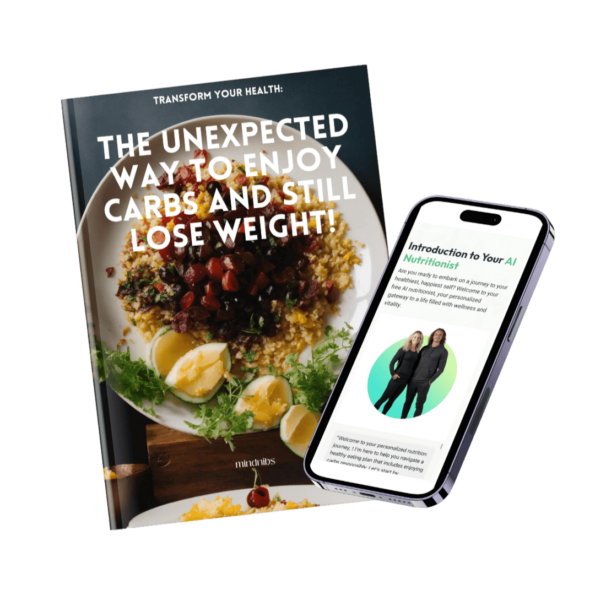
“The Perfect Brew: A Guide to Making Organic Coffee at Home”
Are you tired of drinking mediocre coffee? Do you want to savor a rich and flavorful cup of joe every morning? Look no further than organic coffee. Not only is it better for your health and the environment, but it also tastes better. And the best part? You can easily make it at home with a few simple tips and tricks. In this article, we will guide you through the process of making the perfect brew of organic coffee, from selecting the beans to brewing the coffee. Get ready to elevate your coffee game and enjoy the perfect cup of organic coffee every time.
1. Why Choose Organic Coffee?
The decision to choose organic coffee is something worth considering for many reasons. Here are three main reasons why organic coffee may be the best choice:
- Better for the Environment: Organic coffee is grown using sustainable practices that prioritize the health of the environment. This means that farmers use techniques that promote biodiversity and protect habitats and wildlife. Additionally, organic coffee farms do not use synthetic pesticides and fertilizers that can harm the natural ecosystem. Choosing organic coffee therefore supports efforts to conserve the environment and preserve its resources for future generations.
- Better for Your Health: Conventional coffee is often grown with synthetic chemicals that leave residues on the beans and contribute to environmental pollution. When you drink coffee made from these beans, you are potentially ingesting these chemicals as well. Organic coffee, on the other hand, is grown without the use of any synthetic chemicals. This means that you can enjoy coffee that is free from any harmful residues and grown in a manner that prioritizes human health.
- Better Taste: Organic coffee is grown using traditional methods that place a premium on quality over quantity. The result is a coffee bean with a richer flavor profile that captures the unique terroir and essence of the region in which it was grown. Additionally, organic coffee is often shade-grown, which leads to a slower maturation process and creates a denser, more complex bean. When compared to conventional coffee, organic coffee’s flavor and aroma are generally superior and more nuanced.
Choosing organic coffee offers environmental, health, and taste benefits that can enhance your overall coffee drinking experience. By supporting organic coffee farmers and producers, you can contribute to a more sustainable and equitable coffee industry that prioritizes the welfare of people and the planet.

2. Selecting the Right Beans for Your Brew
When it comes to brewing the perfect cup of coffee, selecting the right beans is absolutely crucial. Here are a few things to keep in mind when you’re choosing your beans:
1. Consider the roast: Different roasts produce different flavors, so choose a roast that matches the flavor profile you’re looking for. Light roasts are more mild and floral, while dark roasts are smokier and have a stronger taste.
2. Look for fresh beans: Old beans can taste stale and flat, so make sure you’re choosing fresh beans that have been roasted within the last two to four weeks. Look for bags with a roast date on them.
3. Choose high-quality beans: While it may be tempting to choose cheaper beans, investing in high-quality beans will result in a better-tasting cup of coffee. Look for beans that are arabica (not robusta) and grown at high altitudes for the best flavor.
Keep these tips in mind the next time you’re choosing beans for your coffee. Remember, the right beans can make all the difference in the flavor of your brew.
3. Prepping Your Equipment for the Perfect Pour
Preparing your equipment is an essential step in ensuring a perfect pour every time. It not only guarantees consistency, but it also saves you time and money in the long run. Here are some tips to help you prep your equipment:
1. Clean Your Equipment
- Before anything else, make sure your equipment is clean. This means wiping down your taps, nozzles, and lines with a cloth and hot water. Don’t forget to take apart your equipment and scrub them well to remove any buildup.
- Using a sanitizing solution is also recommended. Mix a small amount of solution with water and run it through your equipment. This will guarantee that your equipment is perfectly clean and sanitary for your next pour.
2. Chill Your Beer
- Keeping your beer at the ideal temperature is crucial to getting the perfect pour. Your beer should be cold, ideally around 38°F-40°F. This means keeping your kegs in a fridge or cooler before serving.
- When it comes to chilling your beer lines, there are a few methods to choose from. You can use a glycol cooling system or wrap your beer lines in a cooler. Regardless of the method, keeping your beer lines cold will ensure that your beer doesn’t foam and gives you a crisp and refreshing pour.
3. Check Your Carbonation
- Carbonation plays a crucial role in getting the perfect pour. If your beer is over-carbonated, it will result in too much foam. On the other hand, if it is under-carbonated, your beer will taste flat and dull.
- To check your carbonation levels, start by finding your beer’s ideal carbonation level. This depends on the style and brand of beer that you’re serving. Use a carbonation chart to find your beer’s recommended carbonation levels.
- Once you have this information, you can now adjust your carbonation levels. Use your beer regulator to add or release pressure. This will ensure that your beer is perfectly carbonated and ready for the perfect pour!

4. The Science of the Perfect Temperature
Achieving the perfect temperature in your home may seem like a simple task, but it actually requires a good understanding of the science behind it. There are certain factors that determine what temperature is ideal for different rooms in your home. Let’s take a closer look at .
Humidity plays a big role in determining the ideal temperature in your home. High humidity levels can make a room feel much hotter than it actually is, while low humidity can make it feel colder. Experts recommend keeping the humidity level between 30-50%, in order to achieve optimal comfort in your living space. You can easily measure the humidity level with a hygrometer and adjust your HVAC system accordingly.
Another important factor to consider is the insulation of your home. Well-insulated homes are better equipped to maintain consistent temperatures throughout the day, as they prevent heat from escaping during colder months and prevent cool air from escaping during warmer months. In addition to insulation, you can also consider draught-proofing your windows and doors to keep the temperature steady. With these measures in place, you’ll save money on your energy bills and feel more comfortable year-round.
To achieve the perfect temperature in your home, it’s important to take various factors into account, including humidity, insulation, and even the layout of your space. By optimizing each of these factors, you can create a more comfortable living environment that meets your needs and preferences. So, the next time you reach for the thermostat, keep these factors in mind and make adjustments accordingly- your comfort and wallet will thank you!
5. Grinding and Measuring: The Key to Consistency
Grinding and measuring your coffee beans are essential steps to achieving consistent coffee quality every time. Without these two crucial steps, it is impossible to guarantee a uniform particle size, which directly affects the coffee extraction and its flavor.
When it comes to grinding, make sure to choose a good quality burr grinder instead of a blade grinder. A burr grinder will give a more consistent grind size, which significantly affects the coffee’s flavor and aroma. Also, consider investing in a scale and measuring your coffee precisely. Measuring the coffee-to-water ratio scientifically ensures that you recreate the same quality and taste every time.
- Grind size affects the coffee flavor: A fine grind for espresso extraction produces a stronger and more robust coffee flavor. Contrastingly, a coarse grind gives a milder flavor for drip coffee or French press.
- Buy whole beans: For optimal coffee quality, always buy whole coffee beans. Freshness and roast date matter.
- Use a designated grinder for your coffee: Never use a grinder that has been previously used for spices or other items. Cross-contamination affects the taste profile of your coffee.
Consistent coffee quality is achievable with the right equipment, techniques, and practices. Adhering to grinding, measuring, and other procedures will not only ensure consistent taste quality but also increase productivity and reduce expenses. Don’t forget that coffee-making is both an art and science that requires passion, patience, and attention to detail.
6. The Art of the Pour-Over: Step-by-Step Instructions
For those who want to experience the art of coffee-making, pour-over is the perfect brewing method to explore. Pour-over coffee uses a paper or metal filter, which allows for more control over the extraction process. Preparing pour-over coffee requires a few key tools and simple steps to produce a smooth, balanced, and flavorful cup of coffee.
Here are the step-by-step instructions for preparing pour-over coffee:
- Start by heating water to just below boiling point. The ideal temperature for pour-over coffee is between 195°F and 205°F.
- Weigh out your coffee beans according to the desired strength and grind them to a medium-fine consistency.
- Rinse the paper filter with hot water, place it in the pour-over dripper, and add the ground coffee. Slowly pour just enough water over the coffee grinds to wet them completely, allowing the coffee to “bloom” for about 30 seconds.
- Next, use a slow and steady pouring motion to saturate the coffee grinds, allowing the water to drip through the filter and into your cup in a circular motion. Aim for a total brew time of between 2 to 4 minutes, depending on the amount of coffee.
- Once the brewing process is complete, remove the filter and dispose of the coffee grounds. Serve and enjoy your perfectly brewed pour-over coffee!
With a little bit of practice and experimentation with different beans and water temperatures, pour-over coffee can provide a truly impressive and flavorful experience. So why not give it a try and see what all the fuss is about? Why settle for a rushed cup of instant coffee when you can enjoy the artistry of a handcrafted pour-over coffee?
7. Savoring the Fruits of Your Labor: Tips for Perfecting Your Organic Coffee Experience
Organic coffee is a great way to enjoy your daily cup of joe while also reducing the negative environmental impacts of traditional coffee farming. But your coffee experience can be even better by applying some easy tips to bring out the full flavor and aroma of the beans. Here are some tips to help you savor the fruits of your labor:
- Grind Your Beans Fresh: Grinding your coffee beans just before brewing releases the oils and flavors more effectively, resulting in a fresher, tastier cup of coffee. Use a burr grinder instead of a blade grinder for consistent grounds, and adjust the grind size according to your brewing method.
- Use Filtered Water: Coffee is 98% water, so using fresh, clean water can make a huge difference in the taste of your coffee. Avoid tap water, as it can contain impurities or minerals that affect the flavor. A good rule of thumb is to use filtered, spring, or distilled water.
- Experiment with Brewing Techniques: There are several brewing methods for coffee, each producing a unique flavor profile and strength. Try different brewing techniques to see what suits your taste buds. Some popular methods include pour-over, French press, and espresso.
By following these tips, you can elevate your organic coffee experience and enjoy a delicious and sustainable cup of coffee every time. Remember to also store your coffee properly, by keeping it in an airtight container away from sunlight and heat. So sit back, savor the flavors, and enjoy your perfect cup of organic coffee!
We hope this guide has been a helpful resource for those seeking to brew organic coffee at home. Remember, a perfect cup of coffee starts with quality ingredients! Take the time to experiment with the different varieties of coffee beans and brewing methods to find the tasty brew that’s just right for you.

























